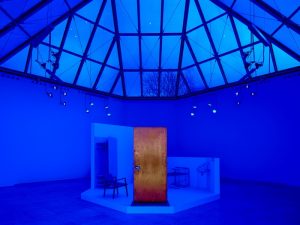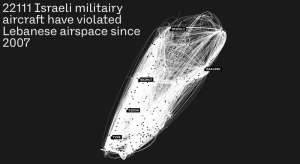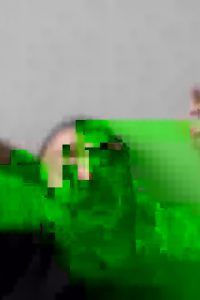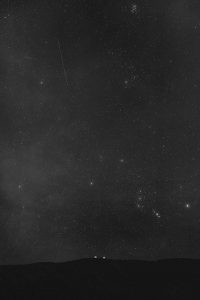Mexican-born Rafael Lozano-Hemmer‘s Homographies combines twisted modernist aesthetics and surveillance technology.
The huge installation features 144 robotic fluorescent light fixtures controlled by 7 computerized surveillance systems. As people walk under the piece, the light tubes rotate to create labyrinthine patterns of light that are “paths” or “corridors” between them.
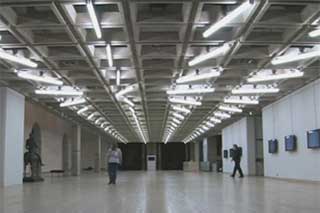
The presence of a single person in the space is detected by the light fixtures as a magnetic frield of influence. When two or more people are detected, the system rotates the fixtures so that “light corridors” are created between them. As many people walk in the court, the light reflect the influence of all of them creating complex patterns similar to isobars.
Every few minutes, the system enters an “interlude mode” showing random orthogonal arrangements.
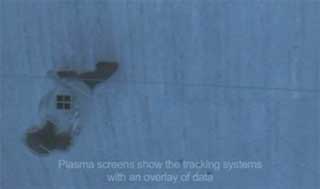
Plasma screens on the gallery walls show the tracking systems with an overlay of data.
In Homographies the “vanishing point” is not architectural, but rather connective, i.e. it is determined by who is there at any given time and varies accordingly. This gives a reconfigurable light-space that is based on flow, on motion, on lines of sight, —an intended contrast to the modernist grid that currently organizes the court.
The installation was premiered at this year’s Sydney Biennale, Zones of Contact, which runs until August 27.
See also another very similar work by Lozano-Hemmer: Standards and Double Standards (except that this time, belt buckles are following visitors) and Marie Sester’s spotlight beam that tracks gallery visitors.
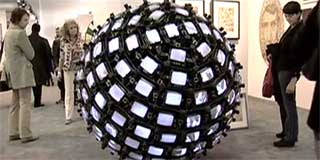
Another surveillance-inspired installation (via information aesthetics and rhizome): Invisible Sphere, a 5.5 foot diameter sphere covered with video monitors and surveillance cameras. Each monitor displays live video feed from a camera placed on the opposite side of the sphere. The sphere can be rolled around in its environment.

